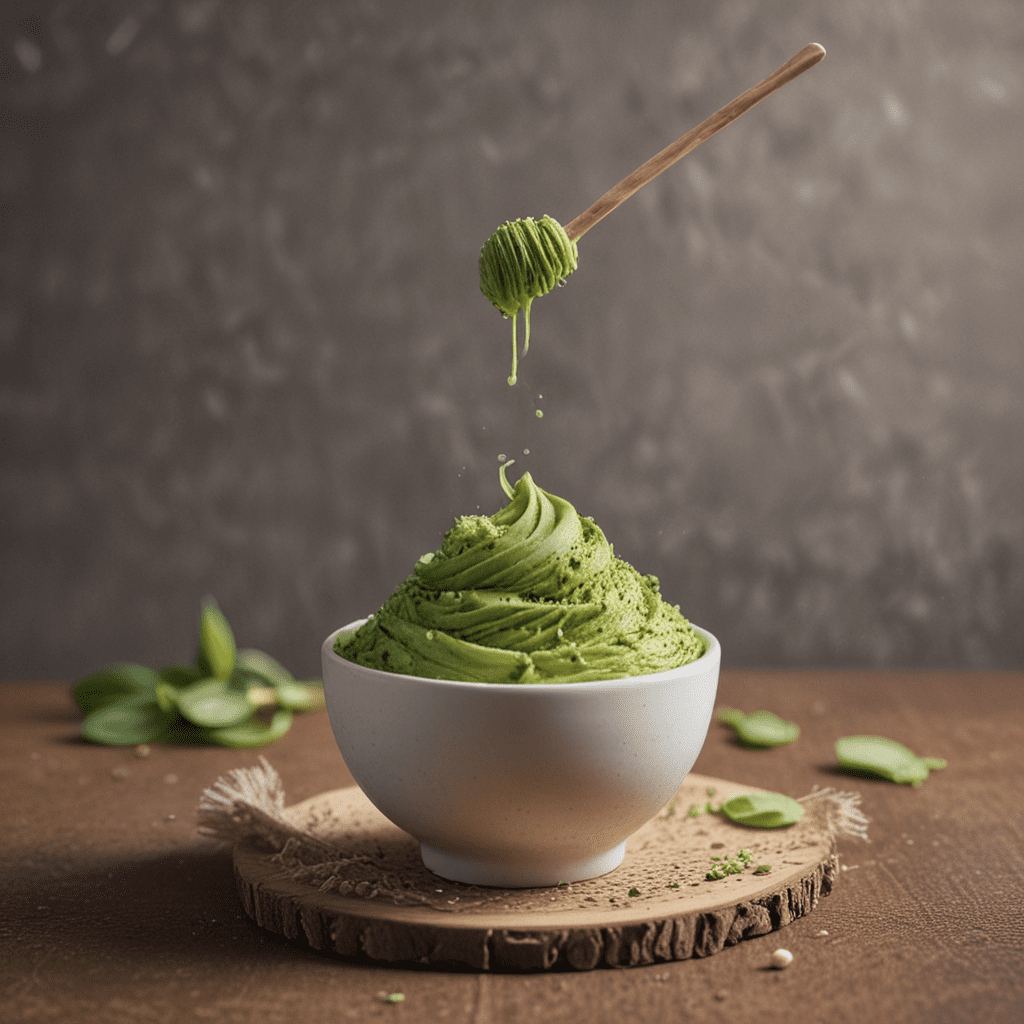
Matcha: A Legacy of Excellence
Since ancient times, matcha, a vibrant green tea powder, has been revered for its distinct flavor and remarkable health benefits. Its roots can be traced back to the Tang Dynasty in China, where tea leaves were first ground into a powder and whisked with hot water to create a frothy beverage. Over centuries, this practice spread to Japan, where matcha became an integral part of the traditional tea ceremony, known as chanoyu. Today, matcha is celebrated worldwide as a symbol of Japanese culture, health, and culinary artistry. Its versatility extends beyond the teacup, inspiring innovative creations in various culinary domains, from pastries to savory dishes and beverages.
Cultivating the Emerald Gem: Matcha Fields
The journey of matcha begins in the verdant fields of Japan, primarily in the regions of Uji, Nishio, and Shizuoka. Here, tea plants are meticulously cultivated under the watchful eyes of skilled farmers who adhere to centuries-old traditions. To produce high-quality matcha, specific tea cultivars are selected, such as Yabukita, Asatsuyu, and Okumidori. These plants are grown in shaded conditions, which promotes the development of chlorophyll and other beneficial compounds responsible for matcha's vibrant color and rich flavor profile.
The Art of Shading: Tencha Production
Approximately three to four weeks before harvest, the tea bushes undergo a unique process called "temae," where they are covered with shade cloths. This shading technique, known as "kabuse," reduces direct sunlight, slowing down the growth rate of the leaves and triggering an increase in the production of amino acids, primarily theanine. Theanine is responsible for matcha's characteristic umami flavor and calming effects. The shaded leaves, known as "tencha," develop a deep emerald green hue and a velvety texture, forming the foundation for exceptional matcha.
Harvesting the Precious Leaves: Spring Ritual
The harvest of tencha leaves is a delicate and time-sensitive process that occurs in the spring. Skilled tea pickers carefully handpick the youngest and most tender leaves from the shaded bushes. Only the top two or three leaves of each stem are selected, ensuring the highest concentration of nutrients and flavor. The freshly harvested tencha leaves are then meticulously sorted and steamed to halt oxidation and preserve their vibrant color and freshness.
Steaming and Drying: Preserving Matcha's Essence
After harvesting, the tencha leaves undergo a steaming process to prevent oxidation and preserve their vibrant green color. The steamed leaves are then spread out on bamboo mats and air-dried. This drying process takes several hours and requires precise temperature and humidity control to ensure optimal quality. Once the leaves are sufficiently dry, they are ready for the final stage of matcha production: milling.
6. Milling the Powdered Gold: Tea Ceremony Tradition
The milling of tencha leaves is a crucial step that transforms them into the delicate powder known as matcha. Traditionally, this process was carried out using stone mills called "ishiusu." These mills were painstakingly operated by hand, requiring immense skill and precision to grind the leaves into a fine powder without generating heat that could compromise the matcha's flavor and aroma. Today, modern electric mills are used to ensure consistent grinding, but the essence of the traditional milling process remains. The resulting matcha powder is a vibrant green, silky smooth, and ready to be whisked into a frothy elixir.
7. Preparing Perfect Matcha: Traditional and Modern Methods
Preparing matcha is an art form in itself, with traditional and modern methods coexisting harmoniously. The traditional method, known as "usucha," involves whisking matcha powder with hot water in a wide, shallow bowl called a "chawan." A bamboo whisk, or "chasen," is used to create a frothy suspension, with the delicate balance of powder and water determining the thickness and consistency of the tea. In contrast, the modern method, known as "koicha," uses a higher ratio of matcha powder to water, resulting in a thicker, more concentrated paste-like consistency. Whether prepared traditionally or with a modern twist, matcha offers a unique and immersive sensory experience.
8. Flavors and Health Benefits: A Symphony of Taste and Wellness
Matcha is renowned for its complex and captivating flavor profile. Its vibrant green hue hints at its high chlorophyll content, which imparts a distinctive vegetal note. The amino acid theanine contributes to its characteristic umami flavor and calming effects, while the presence of catechins and other antioxidants provides a rich depth and a lingering sweetness. Beyond its sensory appeal, matcha is also revered for its exceptional health benefits. Its high antioxidant content combats free radicals, protecting cells from damage. The presence of caffeine and L-theanine promotes alertness and focus while simultaneously inducing a sense of tranquility, making matcha an ideal beverage for both mind and body.
9. Versatility Beyond Ceremony: Matcha's Culinary Adventures
The versatility of matcha extends far beyond the traditional tea ceremony. Its vibrant color and rich flavor have inspired innovative culinary creations, transforming it into a versatile ingredient across various cuisines. Matcha's vibrant green hue adds a vibrant pop of color to pastries, cakes, and confections, while its umami-rich flavor complements savory dishes such as soups, marinades, and sauces. Matcha lattes and smoothies have become popular beverages, offering a refreshing and energizing start to the day. With its ability to enhance both sweet and savory creations, matcha has become a culinary muse, inspiring chefs and bakers to explore its limitless possibilities.
10. Matcha: A Symbol of Health, Harmony, and Cultural Heritage
Matcha transcends its role as a mere beverage; it embodies a profound cultural heritage and a centuries-old tradition. Its vibrant green color symbolizes renewal, growth, and harmony with nature. The ritual of preparing and consuming matcha fosters mindfulness and a deep connection to the present moment. Matcha is not just a tea; it is an art form, a symbol of well-being, and a testament to the rich cultural tapestry of Japan. Its legacy continues to be celebrated and shared, inspiring a global appreciation for its exquisite flavor, remarkable health benefits, and enduring cultural significance.
Frequently Asked Questions (FAQs)
Q: What is the difference between matcha and green tea?
A: Matcha is made from finely ground tea leaves, while green tea is made from steeped tea leaves. Matcha provides a more concentrated and intense flavor and nutrient profile compared to green tea.
Q: How much caffeine is in matcha?
A: Matcha contains approximately 30-40mg of caffeine per serving, which is less than coffee but more than most black teas.
Q: How should I store matcha?
A: Store matcha in an airtight container in a cool, dry place away from direct sunlight. Proper storage helps preserve its freshness and flavor.
Q: What is the traditional way to prepare matcha?
A: To prepare matcha traditionally, whisk 1-2 teaspoons of matcha powder with hot water (175-185°F) in a chawan using a bamboo whisk until a frothy suspension forms.

